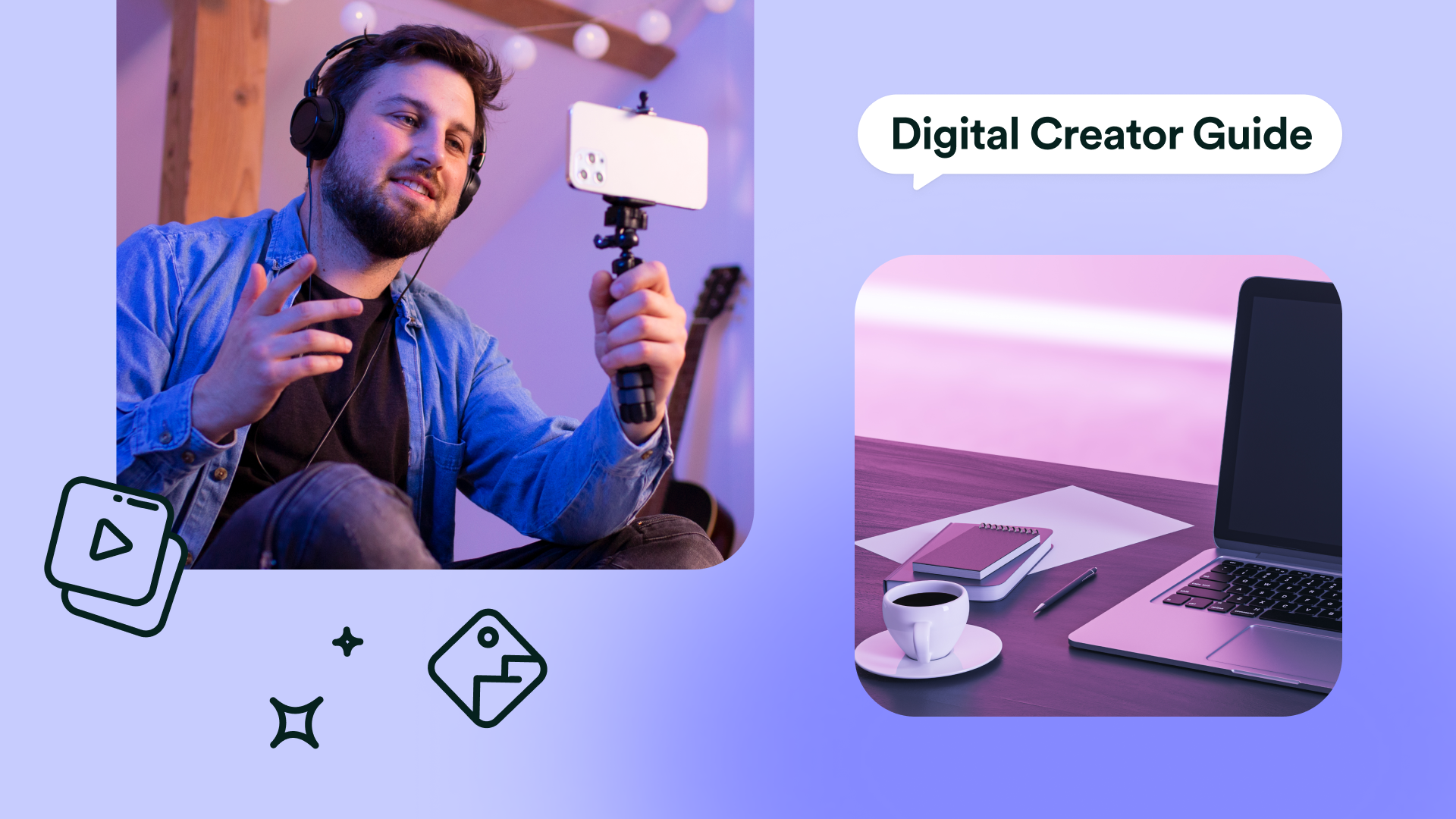Affiliate Marketing 101
 Membership.io Team
Membership.io Team
May 07, 2025

Ever recommended a product or service to a friend or family member because you actually loved it? That’s the heart of affiliate marketing—and why it’s one of the easiest ways to earn passive income online today.
In fact, affiliate marketing has grown into a $16 billion industry. And with an expected 18.8% growth by 2032, it’s safe to say this isn’t just a passing trend. It’s becoming a go-to path for people looking to earn money online without building a business from scratch.
But if you’ve looked into affiliate marketing and thought, “Where the heck do I even begin?”—you’re not alone. Between the online platforms, strategies, and tools, it’s easy to feel overwhelmed. That’s why we created this foolproof affiliate marketing guide, so you can feel confident knowing you’re equipped with industry insights, practical steps, and even a few overlooked strategies to get started with your affiliate marketing.
What Is Affiliate Marketing, Really?
At its core, digital affiliate marketing is about connection.
You recommend a product you trust. Someone clicks your unique link. If they buy? You earn a commission.
That’s it.
Think of it like being the helpful friend who always knows what software to use, what gadget actually works, or which skincare brand doesn’t disappoint. You’re the bridge between someone’s problem and the product that solves it—and you get paid for being that bridge.
You don’t need to handle customer service, inventory, or fulfillment. You just share what works. And in return, brands are happy to pay you a cut.
How Does Affiliate Marketing Work?
Here’s how it typically unfolds:
- You sign up for an online affiliate marketing program.
- You get your own trackable link.
- You add that link to your content—like a blog, podcast, YouTube video, newsletter, or even your network.
- Someone clicks it and takes action.
- You earn money.
The amount you earn depends on the program you’ve enrolled your affiliate marketing business in. Some pay per sale. Others pay per lead or click. The more trust you build, the more likely your audience is to take action.
Who’s Involved in Affiliate Marketing?
There are three main roles in affiliate marketing, and to be an affiliate marketer, it’s important to understand how they all rely on each other to keep the system running.

The Seller (the brand behind the product)
This could be a big-name retailer, a scrappy startup, or even a solo creator with an online course or membership. Whatever the case, they’re the ones who built the product or service and are responsible for the backend stuff—like making it, pricing it, delivering it, keeping customers happy, and providing you with affiliate links.
So why do sellers use affiliates? Because it’s often smarter (and cheaper) to work with people who already have an audience than to dump money into ads that may or may not work. Affiliates give sellers access to built-in trust and targeted exposure, which is gold.
The Affiliate (that’s you)
You’re the middle person. You’re not making the product or buying it—you’re helping people discover it. Maybe you’re writing blogs, recording YouTube videos, posting on Instagram, or just sharing a link in your group chat. However you want to show up, your job is to recommend something you believe in.
And you don’t need to be a huge influencer. Some of the best affiliates are micro-creators who focus on a specific niche and show up consistently. What matters most is that your audience trusts you. When you say, “Hey, this worked for me,” people listen. That’s what moves the needle. Bottom line? You don’t need a huge audience.
The Consumer
They’re the ones clicking the links, reading the reviews, and deciding if they’re going to buy. They’re not officially “in” the affiliate process, but their trust and decision-making power are what keep the whole system alive.
And here’s the key: they’re smart. They can smell a sales pitch from a mile away. That’s why the most effective affiliate marketing doesn’t feel like marketing—it feels like advice from someone who gets it.
Which Type of Affiliate Are You?
Not all affiliate marketers approach things the same way—and that’s okay. But knowing how you promote can make a huge difference in how effective your efforts are and how to do affiliate marketing the right way.
Generally, affiliate marketers fall into one of three categories:
Unattached
This is the “no-strings-attached” approach. You haven’t used the product, you’re not part of the niche, and you’re mostly promoting through paid ads or SEO-driven content.
It’s transactional and usually less transparent. You're acting more like a traffic driver than a trusted voice. And while this can work in high-volume, low-relationship industries, it’s a hard game to win if you're just starting out.
Good for: Experienced marketers running paid ad campaigns to affiliate marketing websites
Watch out for: Low trust, low engagement, and burnout from chasing clicks
Related
Here, you’re closer to the product or niche. You might not have used the exact product you’re promoting, but you understand the space. Maybe you’re a tech blogger recommending a tool you’ve researched but haven’t personally tried. Or a fitness coach linking to gear your clients use.
This middle ground works well if you're building authority in a niche and are thinking about affiliate advertising. Your audience knows you “get it,” even if your connection to the product isn’t super personal.
Good for: Niche bloggers, creators, coaches, and educators
Watch out for: Promoting products you don’t fully believe in, (yes, your audience can sense it!)
Involved
This is the gold standard of internet affiliate marketing.
You’ve used the product. You genuinely like it. Maybe it even changed the way you work, live, or create. And when you talk about it, people can tell you’re speaking from experience.
This kind of recommendation doesn’t feel like a sales pitch—it feels like a friend giving great advice. That’s what builds real trust (and leads to real conversions).
Good for: Anyone trying to build a long-term brand, business, or membership with affiliate online marketing.
Watch out for: Nothing—this is the lane to aim for.

Common Types of Affiliate Marketing Channels
One of the best parts of being an affiliate marketer? There’s no one-size-fits-all approach. You can promote your affiliate links in whatever way makes the most sense for your strengths, your audience, and your digital marketing content style.
Here are some of the most common affiliate marketing channels:
Blogs and Niche Websites
This is one of the most popular channels in the affiliate marketing process for a reason. Blogs allow you to dive deep into a topic, build trust, and recommend products naturally, often within reviews, tutorials, or detailed resource roundups.
If you’re into SEO, love writing, and are super curious about digital and affiliate marketing, this one’s a strong contender. And the best part? Your content can keep working for you for months (or even years) after you publish it.
Pro tip: Target long-tail keywords with affiliate intent, like “best podcast microphones under $100” or “tools I use to edit wedding photos.”
YouTube and Video Content
Video is huge for affiliate sales because people get to see your personality and the product in action. Whether you’re doing product reviews, unboxings, or how-to guides, dropping affiliate links in the video description (or using YouTube cards) can drive solid conversions.
Pro tip: Show, don’t just tell. Demonstrating how a product works builds trust fast.
Email Newsletters
If you’ve built an email list, affiliate links can be a natural fit—especially if you regularly send curated content, product roundups, or tips tailored to a niche audience.
Because your subscribers have already opted in, they’re more likely to trust your recommendations.
Pro tip: Always disclose affiliate links and keep the focus on being helpful—not salesy.
Social Media
Instagram, TikTok, Pinterest, Twitter—wherever your audience hangs out, you can share affiliate links or drive traffic to content that includes them.
Short-form videos are especially powerful for quick product demos or “what I use daily” style posts.
Pro tip: Use link-in-bio tools to organize your affiliate content, especially if the platform doesn’t let you add links directly to posts.

Memberships and Online Communities
This one’s overlooked, but we promise it’s one worth considering. If you run a membership or community (especially on platforms like Membership.io), you’ve already built trust—and that makes it easier to recommend tools, templates, or services you believe in.
You can include affiliate links inside your resource libraries, gated content, course modules, or bonus guides. Since people are already invested in your world, they’re more likely to follow through.
Pro tip: Keep a “Recommended Tools” section inside your member portal and update it as your stack evolves.
Podcasts
Podcasts are growing fast—and they’re a surprisingly strong affiliate channel. Whether you work links into your show notes or do spoken “sponsor-style” promos during the episode, your voice can carry a lot of influence.
Pro tip: Use short, memorable custom links (like yourdomain.com/tool) to make it easier for listeners to follow through.
What Can You Promote as an Affiliate?
Honestly? So many things:
- Physical Products – Amazon, e-commerce stores. Easy to start, lower commissions.
- Digital Products – Courses, templates, memberships. Higher earnings potential.
- Services + Software – Think CRMs, hosting, and SaaS tools. Often recurring commissions.
The best results come from promoting what aligns with your values and what your audience genuinely needs.
How Do Affiliates Get Paid?
Not all affiliate programs are created equal—and how you get paid can vary depending on the company, the industry, and even the product itself.
Here are the most common payout models you’ll come across:
Pay per Sale (PPS)
This is the most common setup: someone clicks your link, buys the product, and you earn a commission. The amount you make usually depends on the price of the item and the program’s commission structure.
For example, you might earn 5% on a $100 product—or 40% on a $200 course.
Good for: Digital products, courses, e-commerce, memberships
Pro tip: Focus on promoting higher-ticket items or programs with recurring revenue (like subscription tools) to increase your earnings over time
Pay per Lead (PPL)
With this model, you don’t need someone to buy anything—you just need them to take a specific action. That could be signing up for a free trial, filling out a form, or joining a webinar.
It’s often used in industries where a lead is valuable, even if it doesn’t convert immediately (like SaaS, finance, or insurance).
Good for: Affiliates with strong content funnels, email marketers, or creators focused on free value
Pro tip: Make sure the landing page you’re linking to is well-designed—your income depends on conversion
Pay-per-Click (PPC)
You earn money every time someone clicks your link, regardless of whether they buy or sign up. It’s rare these days and usually comes with lower payouts (think pennies per click). You’d need high-volume traffic to make this model work at scale.
Good for: Large websites or search-driven content with lots of daily traffic
Pro tip: This model might seem easy, but the payouts are usually too low to justify unless you’re getting thousands of clicks a day
Pay per Install (PPI)
Used mostly in the software and mobile app world, this model pays you when someone installs an app or downloads software using your link.
It’s often tied to volume campaigns or specific geo-locations, so payouts can vary.
Good for: Tech reviewers, app roundups, or influencers targeting mobile-first users
Pro tip: Be upfront about what the install includes (especially if there are upsells or permissions involved)
Why a Membership Is the Perfect Companion to Affiliate Marketing
Affiliate marketing is a great way to earn passive income, but pairing it with a membership? That’s how you push past one-off commissions and create a robust ecosystem of recurring affiliate sales.
Here’s the thing: affiliate links are more powerful when you’ve got a community that trusts you. And that’s exactly what a membership gives you. It’s a place where your audience comes together, sticks around, and actually pays attention.
With a membership, you're not just sharing random links on social media, hoping someone clicks. You’re building deeper relationships with people who want to hear from you regularly. That means when you do recommend a product, it doesn’t feel out of place. It feels natural, helpful, and relevant.
So, if you're already sharing affiliate links, it might be time to level up. A membership turns those one-off clicks into a long-term audience—and a real business.
If that’s the kind of business you’re working toward, Membership.io isn’t just a platform to build your membership, it also has an affiliate program designed for creators like you. One that pays recurring commissions, not just quick wins. So while you’re helping others build their communities, you’re growing a more predictable income stream for yourself, too.
Why Affiliate Marketing Works
Because people trust people—not ads.
If someone follows you, reads your blog, or tunes into your content, it’s likely because they see you as someone who gets it. So when you share a product that helps them out or solves one of their pain points—trust is built. Over time, that trust deepens, and a once skeptical consumer becomes a lifetime fan.
But remember, the key ingredient in any successful affiliate strategy is authenticity. So, when choosing a product to promote or an affiliate strategy to stick to, ask yourself, “Is this something I’m qualified to speak about?”
If the answer is yes, lean in. Share every possible detail about your personal experience with the products you choose. Was there a software that helped you finish a project in half the time? Or, a pair of sneakers that were good but not great? Share it all. The more honest, less polished, and more ‘you’ your affiliate marketing is, the more it will resonate and the more successful you’ll be.



